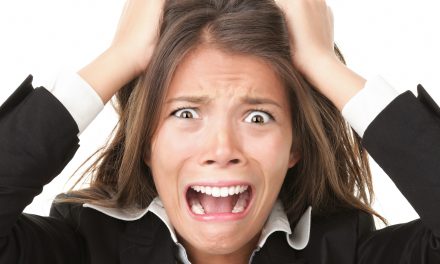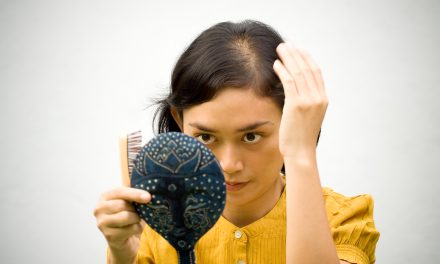Hair loss after chemotherapy is a common concern for cancer patients undergoing treatment. Chemotherapy targets rapidly dividing cells, which includes not only cancer cells, but also hair follicles. Consequently, this results in hair loss for many individuals, which can be emotionally challenging and impact one’s self-image during an already difficult time.

Understanding the process of chemotherapy-induced hair loss and exploring various ways to manage it can provide relief and empowerment. From learning about hair and scalp care during treatment to finding ways to cope with partial hair thinning or total hair loss, patients can take steps to address hair loss and restore their sense of well-being. As hair begins to regrow after chemotherapy, it’s essential to protect and care for new hair while being aware of potential changes in hair texture and color.
Key Takeaways
- Chemotherapy-induced hair loss can be managed through proper hair and scalp care during treatment.
- Coping strategies for hair loss include addressing partial hair thinning or total hair loss and considering financial aspects.
- After chemotherapy, focus on protecting and caring for regrowing hair, being mindful of possible texture and color changes.
Understanding Chemotherapy-Induced Hair Loss

Causes of Hair Loss in Cancer Patients
Chemotherapy is a treatment for cancer that utilizes drugs to destroy cancer cells. One of the side effects of chemotherapy is hair loss, which occurs because the drugs also affect rapidly dividing cells like those in hair follicles. Chemotherapy-induced alopecia (CIA) is a common and distressing side effect, as hair loss can negatively influence self-esteem and body image 1.
Hair Growth Cycle and Chemotherapy Impact
The hair growth cycle consists of three phases: anagen (growth), catagen (transition), and telogen (resting). Chemotherapy drugs have the most impact on hair follicles during the anagen phase, as the cells are rapidly dividing. When chemotherapy drugs attack the hair follicle cells, it disrupts the anagen phase, causing hair to weaken and fall out.
Factors affecting the severity of hair loss:
- Type of chemotherapy drug used
- Dosage of the drug
- Length of the treatment period
Hair loss may start within two to four weeks after the initiation of chemotherapy treatment and can be gradual or happen quickly in clumps. Accumulations of loose hair may be found on pillows, hairbrushes, or in the shower drain 2.
Temporary vs. Permanent Hair Loss
In most cases, hair loss due to chemotherapy is temporary. Hair usually begins to grow back within a few months after chemotherapy treatments end. However, the texture and color of the hair might be different from the original hair. Permanency of hair loss is rare and depends on factors such as the specific drugs used and the individual’s response to the treatment.
In conclusion, understanding the causes and effects of chemotherapy-induced hair loss can help patients better cope with this side effect and prepare for possible changes in their appearance during cancer treatment.
Footnotes
Preparing for Hair Loss
Consultation with the Care Team
Before starting chemotherapy, it is essential to consult with your care team, including your doctor, to determine whether the treatment you will receive is likely to cause hair loss1. This discussion allows you to plan ahead and manage your expectations. In some cases, your healthcare team may suggest using a cooling cap, which may help reduce the risk of hair loss during chemotherapy2.
Choosing Head Coverings Before Hair Loss Begins
Once you know that hair loss is likely to occur, it’s a good idea to start exploring various head covering options. Here are a few suggestions to consider:
-
Wigs: To achieve the most natural appearance, wigs made from real hair or high-quality synthetic materials are recommended. Remember to choose a wig that matches your natural hair color and style.
-
Hats: Hats come in various materials, styles, and colors, allowing you to express your personality while dealing with hair loss. Soft materials like cotton, wool, or fleece will keep your scalp comfortable3.
-
Caps: Caps are a casual alternative to hats, and they are easier to wear than a wig. Look for caps made from gentle materials to reduce potential irritation on your scalp3.
-
Scarves: Scarves provide a stylish and versatile option to cover your head. They can be styled in numerous ways and are an excellent choice for those who prefer lighter head coverings3.
By preparing for hair loss ahead of time, you can help reduce the stress that may come with this side effect of chemotherapy, allowing you to focus on your treatment and overall well-being.
Footnotes
Hair and Scalp Care During Chemotherapy
Taking proper care of your hair and scalp during chemotherapy can help minimize hair loss and ensure a healthier regrowth process. In this section, we will discuss two crucial aspects of hair and scalp care during chemotherapy: gentle hair care and scalp cooling techniques.
Gentle Hair Care
It is important to be gentle with your hair during chemotherapy to minimize damage to the hair shaft and reduce hair loss. Follow these simple tips for hair care during treatment:
- Use a mild shampoo and conditioner specifically formulated for sensitive hair and scalp.
- Avoid using hot water while washing your hair. Stick to warm or lukewarm water to prevent irritation and dryness of the scalp.
- Use a soft-bristled brush or wide-toothed comb to gently detangle your hair and avoid excessive pulling.
- Refrain from using harsh chemical treatments such as hair dyes and perms during chemotherapy. These can weaken the hair structure and cause further hair loss.
- Limit the use of heat-styling tools such as hair dryers, curling irons, and flat irons. If necessary, use them on the lowest heat setting.
- Consider switching to natural products with fewer ingredients for gentle hair care during chemotherapy 1.
Scalp Cooling Techniques
Scalp cooling or scalp hypothermia is a technique used to reduce hair loss during chemotherapy. This method involves wearing a cooling cap that will lower the temperature of the scalp, constricting blood vessels and reducing the amount of chemotherapy drugs reaching the hair follicles 2.
- Scalp cooling should be performed before, during, and after each chemotherapy session.
- Cooling caps come in different types, with some using gel packs and others circulating cooled liquid.
- The effectiveness of scalp cooling varies depending on the type of chemotherapy drugs and the individual’s response to the treatment.
- Consult with your healthcare provider to determine if scalp cooling is a suitable option for you 3.
Proper hair and scalp care during chemotherapy is essential for minimizing hair loss and promoting healthy hair regrowth. By following the tips and techniques mentioned above, patients can better manage the impact of chemotherapy on their hair and scalp.
Managing Total Hair Loss
Embracing Baldness
After chemotherapy, it’s common for individuals to experience total hair loss. Embracing baldness can be an empowering and liberating choice for some people. It can help to reduce the stress and worry associated with hair loss, and it allows for a focus on regaining health and wellness. Confidence is key; own the look and remember that beauty comes in many forms.
In addition to embracing baldness, there are various head coverings available that can help individuals feel more comfortable and confident. Some popular options include scarves, turbans, or even fashionable hats to protect the scalp from the sun and cold.
Selection and Care of Wigs and Hairpieces
For those who prefer to cover their head, wigs and hairpieces can provide a natural-looking solution. When selecting a wig, it is important to choose one that is comfortable, well-fitted, and suits your personal style. Wigs can be made from synthetic or natural hair, with the synthetic ones being more affordable and easier to maintain.
Here’s a quick comparison between synthetic and natural hair wigs:
| Synthetic | Natural Hair | |
|---|---|---|
| Price | Affordable | More expensive |
| Maintenance | Low maintenance | Requires styling |
| Durability | Less durable | More durable |
| Appearance | May look artificial | More natural |
A well-fitted wig should sit snugly on your head without causing discomfort. To ensure a proper fit, it is recommended to have your head measured by a professional. A wig cap can be worn underneath the wig to help secure it in place and to protect your scalp.
In addition to wigs, other hairpieces such as a cranial prosthesis can be used. This is a custom-made piece, designed to match the individual’s natural hair and can be attached securely to the scalp.
Proper care is essential for maintaining the quality and appearance of wigs and hairpieces. Follow the manufacturer’s guidelines on cleaning and storing your wig, and be gentle when brushing or styling it to avoid damage.
Managing total hair loss after chemotherapy can be challenging, but with the right approach and resources, individuals can regain their confidence and feel comfortable in their appearance. Embracing baldness or finding the perfect wig, hairpiece, or head covering, will help individuals adjust during this transitional period.
Coping with Partial Hair Thinning
Styling Tips for Thinning Hair
Experiencing hair thinning after chemotherapy can be emotionally challenging. Fortunately, there are styling tips you can follow to manage thinning hair and regain your confidence. Firstly, consider getting a haircut that adds volume and texture to your hair. Shorter hairstyles can make hair appear fuller, and layers can help add depth to your look.
Try using hair care products designed for thinning hair, such as volumizing shampoos and conditioners. These can provide extra lift and make your hair feel thicker. Additionally, avoid applying too much heat from hair dryers and avoid tying hair too tight, as it may lead to further damage.
When styling, you can use:
- Gentle combs with wide teeth
- Soft bristle brushes
- Light hold styling gels or mousses
Using Hair Growth Products Safely
There are various hair growth products available to promote hair regrowth. One popular option is minoxidil, also known as Rogaine. Minoxidil is approved by the FDA and can support hair regrowth by increasing blood flow to hair follicles. However, it’s essential to use minoxidil safely and as directed. Common guidelines for minoxidil usage include:
- Apply the recommended dose to your scalp daily or as directed by your doctor.
- Do not use on irritated or damaged skin.
- Keep away from the eyes, nose, and mouth.
- Discontinue use if significant side effects occur, such as itching, redness, or rash.
Before starting any hair growth products, consult your healthcare professional, especially if you’re undergoing chemotherapy treatments. It is crucial to ensure that any product you choose is safe and compatible with your medical regimen.
Hair Regrowth After Chemotherapy
What to Expect During Regrowth
After chemotherapy, it’s common for patients to experience hair loss due to the treatment affecting healthy cells, including hair follicles. As the treatment ends, the hair will gradually begin to regrow. It is important to know that the regrowth process may vary for each individual in terms of hair texture and color.
During the initial stages of hair regrowth, the new hair may have a different texture or color. For instance, some people might notice their hair growing back in as curly, even if their natural hair texture was straight or wavy before treatment. Similarly, the color might change temporarily due to changes in the melanin-producing cells of the hair follicles.
Timeline for Hair Regrowth
The timeline for hair regrowth after chemotherapy can vary for each person. However, some general milestones in the recovery process include:
- 2-4 weeks after treatment: Hair may begin to fall out, either quickly in clumps or gradually over time1.
- 3-6 months after treatment: Hair regrowth typically starts after the completion of chemotherapy2. The rate and fullness of regrowth depend on individual factors, such as the type and dosage of chemotherapy drugs, and the person’s overall health.
- 12 months after treatment: By this time, most people notice significant hair regrowth, and the hair texture and color may return to their pre-chemotherapy state.
It is crucial for patients to be patient and gentle with their hair during the regrowth process. Using mild shampoos, avoiding heat styling tools, and minimizing the use of chemical treatments can help promote healthier hair growth. Additionally, considering a shorter haircut during this time can help make the hair appear fuller and encourage more natural growth.
Footnotes
Protecting New Hair
Sun Protection and Headwear
One of the essential ways to protect new hair growth after chemotherapy is by shielding it from the sun. Wearing sun protection, such as hats or caps, can help prevent damage caused by the sun’s harmful ultraviolet (UV) rays. Additionally, applying a broad-spectrum sunscreen to your scalp can provide added protection, especially in areas where your hair may be thin or sparse.
When choosing headwear, opt for:
- Wide-brimmed hats to provide maximum UV protection for your face, ears, and neck.
- Sun hats or caps made of breathable, natural materials like cotton or linen.
- Hats with a UPF (Ultraviolet Protection Factor) rating of at least 30 to ensure sufficient sun protection.
Choosing the Right Hair Care Products
Selecting the appropriate shampoo and conditioner for your new hair growth is critical to maintaining healthy hair after chemotherapy. Using gentle hair care products can help minimize breakage and ensure that your hair grows back strong and healthy.
Consider the following tips when choosing hair care products:
- Look for shampoos and conditioners specifically designed for sensitive or fragile hair.
- Opt for products free of harsh chemicals, sulfates, or parabens to avoid further damage.
- Choose products that help nourish and moisturize your hair and scalp, as they can often become dry or irritated after chemotherapy.
In addition to selecting the right products, adopting a gentle hair care routine can help protect your new hair growth. Some suggestions include:
- Avoiding excessive brushing or combing, which can cause breakage.
- Using a wide-toothed comb or your fingers to detangle hair gently.
- Restraining from heat-styling tools, such as hair dryers, curling irons, or straighteners.
- Limiting the use of hair dyes or chemical treatments until your hair has regained its full strength and thickness.
By incorporating sun protection, appropriate headwear, and suitable hair care products into your routine, you can help ensure that your new hair growth remains healthy and strong after chemotherapy.
Addressing Changes in Hair Texture and Color
After undergoing chemotherapy, many individuals experience changes in their hair’s texture and color when it begins to grow back. It is important to learn how to adapt to these new hair characteristics and care for your hair properly.
Adapting to New Hair Characteristics
When hair starts to grow back after chemotherapy, it might have a different texture or color than before. Some people find their hair becomes curly, while others notice it is more coarse or even has a different color. Here are some tips to help you adapt to these changes:
-
Gentle hair care: Use a gentle shampoo and conditioner specifically designed for sensitive or recovering hair. Applying a leave-in conditioner or hair mask can help to nourish and soften your new hair, making it more manageable.
-
Temporary hair dye: If you’re unhappy with the new color of your hair, consider using a temporary hair dye instead of a permanent or semi-permanent one. This is a kinder option for fragile hair, and it can be a helpful way to adjust to changes in color while getting used to your new hair.
-
Styling tools: Minimize the use of heat-styling tools, such as hair dryers, straighteners, and curling irons, as they can cause further damage to fragile hair. Instead, embrace your hair’s natural texture and try air-drying or other non-damaging styling techniques.
-
Patience: Remember that these changes in hair texture and color might be temporary. As your hair grows longer and you continue to recover from chemotherapy, it’s possible that your hair will return to its pre-treatment state, or at least become more similar to how it was before.
Taking proper care of your new hair and learning how to adapt to its changes in texture and color can help you feel more confident and comfortable during the recovery process. By easing into these new characteristics and caring for your hair gently, you can embrace this stage of regrowth and enjoy the journey towards healthy hair.
Psychological Effects of Hair Loss
Hair loss after chemotherapy can have significant psychological effects on a person’s overall well-being. It is essential to address these emotional aspects, as well as the physical hair loss, while undergoing cancer treatment.
Support Groups and Counseling
One helpful option to cope with the emotional impact of hair loss is to join a support group. These groups provide a venue for individuals to share their feelings and experiences with others who have undergone chemotherapy and faced hair loss. Support groups often provide valuable advice and encouragement, which can alleviate the stress and anxiety associated with hair loss.
Additionally, professional counseling can offer personalized coping strategies and techniques to navigate the emotional challenges of hair loss due to chemotherapy. Cancer care often involves a multidisciplinary team, including mental health professionals who specialize in helping cancer patients manage and cope with the emotional effects of their treatment.
Personal Image and Self-Confidence
Hair loss after chemotherapy can impact a person’s self-image and confidence, as hair plays a significant role in an individual’s appearance. To help rebuild self-confidence, some programs, such as the Look Good Feel Better program, offer workshops and learning sessions that teach makeup and styling techniques for individuals undergoing cancer treatment. These workshops focus on enhancing the individual’s look and addressing the changes in their appearance due to treatment side effects.
Family members also play a vital role in providing emotional support and reassurance as the person adjusts to their hair loss and altered appearance. Encouragement from family and friends helps boost self-confidence and maintain a positive outlook throughout the treatments.
In summary, addressing the psychological effects of hair loss after chemotherapy is essential for promoting overall well-being and emotional health. Participating in support groups, seeking professional counseling, and engaging in programs that focus on personal image can greatly help individuals manage the emotional challenges associated with hair loss.
Financial Considerations
Health Insurance and Hair Loss Treatments
One of the key factors to consider when seeking treatment for hair loss after chemotherapy is whether you have health insurance and what it covers. Many insurance providers offer coverage for hair loss treatments related to chemo. This could include the cost of purchasing a prescription wig or other hair restoration services. It’s crucial to consult your insurance provider and double-check your policy to determine your coverage for such treatments.
If your insurance does not provide coverage or offers only limited coverage, consider contacting nonprofit organizations or cancer support groups that might have programs in place to assist patients with hair loss treatment costs. Such resources can significantly reduce out-of-pocket expenses, making wigs and other treatments more affordable for cancer patients.
Cost-Effective Hair Loss Solutions
If you’re looking for cost-effective ways to manage hair loss after chemotherapy, consider exploring the following options:
-
Wigs: Wigs can provide an instant and affordable solution to managing hair loss. They come in various styles, materials, and prices to suit different budgets and preferences. Synthetic wigs tend to be less expensive than human hair wigs, making them a popular choice for many people (source). Additionally, some charity organizations offer free wigs to eligible cancer patients.
-
Hats and Caps: Another budget-friendly option to consider is wearing hats and caps. These can provide comfort and style while covering hair loss. Hats range from simple cotton beanies to fashionable wide-brimmed hats, while caps encompass sporty styles to trendy newsboy caps.
-
Scalp Cooling: Scalp cooling is a method used during chemotherapy to minimize hair loss. While it may not completely prevent hair loss, evidence suggests that it can help reduce its severity (source). Note that this option may not be suitable for everyone and should be discussed with your healthcare team.
Remember, no matter which solution you choose, it’s essential to maintain a positive and confident outlook during treatment. Your emotional well-being is just as important as your physical recovery, and having a cost-effective hair loss solution can help ease some of the stress associated with chemo-related hair loss.
Frequently Asked Questions
What steps can be taken to encourage hair regrowth post-chemotherapy?
After completing chemotherapy, hair tends to grow back within a few months, but some steps can be taken to promote healthy hair regrowth. Maintaining a balanced diet, staying hydrated, and managing stress all contribute to hair growth. Gently massaging the scalp can increase blood flow, which may stimulate hair growth. Consult with a dermatologist for specific recommendations based on your situation.
Are there any natural remedies effective in promoting hair recovery after chemotherapy?
Some natural remedies that might help with hair regrowth after chemotherapy include gentle scalp massages, which can stimulate blood flow, and using gentle hair care products free of harsh chemicals. Herbal oils such as lavender, rosemary, or peppermint are sometimes used in conjunction with scalp massage, but their efficacy has not been scientifically proven.
How can one deal with permanent hair loss as a result of chemotherapy?
In some cases, hair loss due to chemotherapy may be permanent. If this occurs, one can consider options such as wearing wigs, scarves, or hats to cover the hair loss. Consulting a stylist for hairstyles that suit the hair’s new texture or exploring hair replacement solutions can help in gaining confidence and adjusting to permanent hair changes.
What can be expected in terms of hair growth one year after completing chemotherapy?
Hair growth varies from person to person, but after 6-12 months, most people experience significant regrowth. The hair might be different from its previous texture, color, or thickness. A year after completing chemotherapy, individuals can expect to have shorter hair than before treatment began, and the full length and thickness may take longer to be restored. Patience and gentle care can aid in regaining the pre-chemotherapy hair state.
Which vitamins or supplements are suggested to prevent hair loss during chemotherapy treatment?
While vitamins and supplements cannot completely prevent hair loss during chemotherapy, certain nutrients like biotin, vitamin E, and vitamin A may help in maintaining hair health. It is essential to consult with your healthcare team before taking any supplements during chemotherapy to ensure they do not interfere with your treatment.
What hair care products are recommended for use following chemotherapy?
Using mild, sulfate-free shampoos and conditioners can help minimize stress on the hair and scalp after chemotherapy. Avoid using heat-based styling tools like hair dryers, curling irons, or straighteners, as they can cause further damage. Choosing gentle brushes or wide-toothed combs can help prevent breakage during the regrowth phase. Consulting with a dermatologist or a hairstylist experienced in post-chemotherapy hair care is a valuable step toward maintaining healthy regrowth.















